Chloroquine phosphate isn’t something you take lightly. Once hailed as a miracle drug for malaria and even briefly pushed as a COVID-19 treatment, it’s now clear this medication carries serious risks that most people don’t understand. If you’ve been told to take it-or are considering it-you need to know what’s really going on inside your body.
What chloroquine phosphate actually does
Chloroquine phosphate is an antimalarial drug. It works by interfering with how malaria parasites digest hemoglobin in red blood cells. That’s its main job. But it also has immune-modulating effects, which is why doctors sometimes use it for autoimmune conditions like lupus and rheumatoid arthritis. It’s not a painkiller. It’s not an antibiotic. It’s a powerful chemical that changes how your cells behave.
It’s sold under brand names like Aralen, and generic versions are widely available. But here’s the catch: it’s not safe for everyone. The margin between a therapeutic dose and a toxic one is dangerously narrow. A single extra pill can cause irreversible damage.
Common side effects you can’t ignore
Most people who take chloroquine phosphate will experience some level of discomfort. These aren’t rare side effects-they’re common. Nausea, vomiting, and stomach cramps happen in over 30% of users, especially when they first start taking it. Diarrhea and loss of appetite are also frequent.
Headaches and dizziness are so common they’re often dismissed as "just part of the process." But they’re early warning signs. If you feel lightheaded after taking it, don’t brush it off. That’s your nervous system reacting to the drug’s impact on brain chemistry.
Skin reactions are another red flag. Itching, rashes, and even hair loss can occur. Some people develop blue-gray discoloration on their nails, skin, or even the whites of their eyes. This isn’t temporary. Once it happens, it can last for years-even after stopping the drug.
The scary risks: heart damage and vision loss
The biggest dangers aren’t the nausea or the rash. They’re the silent, irreversible ones.
Chloroquine phosphate can cause a condition called retinopathy. This is damage to the retina-the part of your eye that turns light into signals your brain understands. It starts with blurred vision or difficulty focusing. By the time you notice it, the damage is often permanent. Studies show that after five years of daily use, up to 20% of patients develop detectable retinal changes. That’s one in five people.
Regular eye exams every six months are mandatory if you’re on this drug long-term. But many people aren’t told this. They’re given a prescription and told to take it daily. No warnings. No follow-up. That’s how vision loss happens.
Then there’s the heart. Chloroquine phosphate can disrupt your heart’s electrical rhythm. This can lead to a dangerous condition called QT prolongation. In simple terms, your heart takes longer to reset between beats. That can trigger irregular heart rhythms-some of which are fatal. People with existing heart conditions, older adults, and those taking other medications that affect heart rhythm are at the highest risk.
There have been documented cases of sudden cardiac arrest linked to chloroquine use. The FDA issued a warning in 2020 after multiple deaths occurred during the pandemic when the drug was used off-label for COVID-19. Even now, in 2025, doctors still see patients admitted to hospitals with life-threatening arrhythmias after taking chloroquine without proper monitoring.
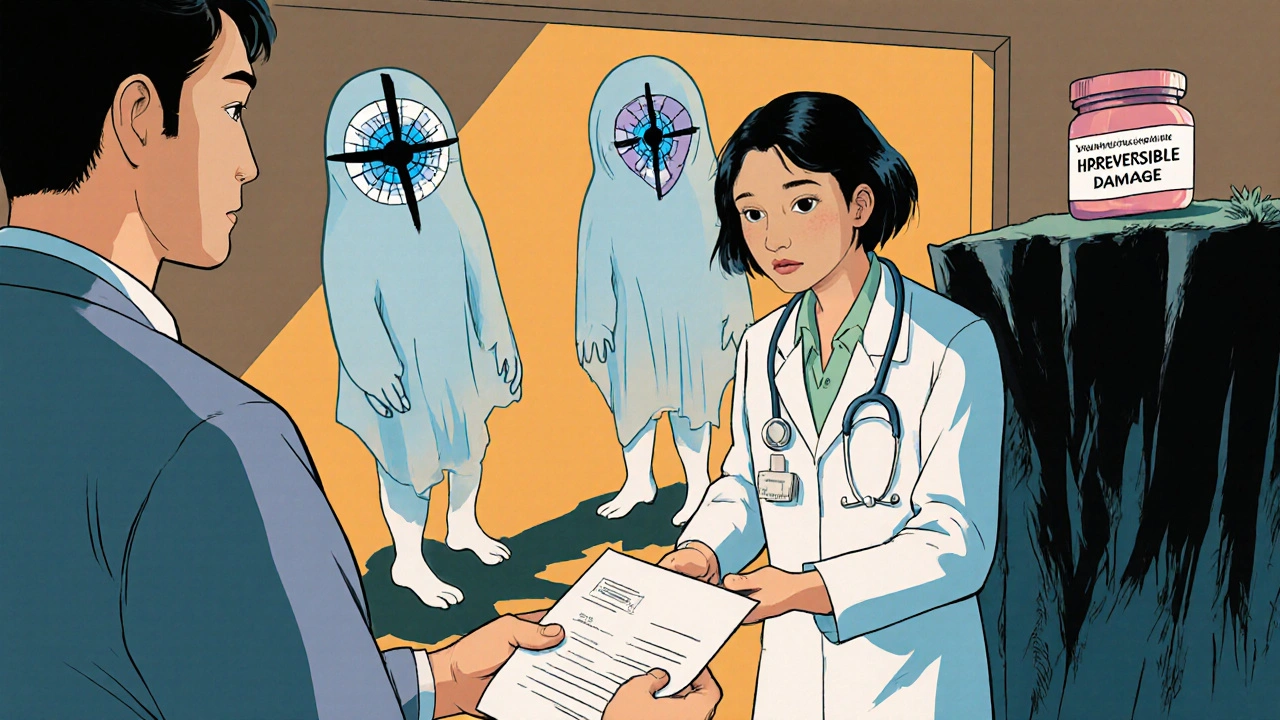
Drug interactions you might not realize
Chloroquine phosphate doesn’t play well with others. If you’re taking any of these, you’re increasing your risk:
- Antibiotics like azithromycin or erythromycin
- Antidepressants such as citalopram or escitalopram
- Antiarrhythmics like amiodarone or quinidine
- Medications for diabetes-chloroquine can lower blood sugar dangerously
- Statins for cholesterol, especially simvastatin
Even over-the-counter supplements like St. John’s wort or high-dose magnesium can interfere. Many people don’t tell their doctors about every pill they take. That’s how accidents happen.
Who should never take chloroquine phosphate
This isn’t a drug for trial and error. Certain people should avoid it entirely:
- Anyone with a history of retinal disease or macular degeneration
- People with heart rhythm disorders like long QT syndrome
- Those with liver or kidney disease-your body can’t clear the drug properly
- Pregnant women, especially in the first trimester-animal studies show fetal damage
- Children under 6 years old, unless under strict medical supervision
- Anyone allergic to 4-aminoquinoline compounds
Even if you’re young and healthy, that doesn’t mean you’re safe. Genetic differences affect how your body processes chloroquine. Some people metabolize it slowly, causing buildup. Others are ultra-sensitive to its effects. There’s no way to predict this without genetic testing-which most doctors don’t do.
What to do if you’re already taking it
If you’ve been prescribed chloroquine phosphate, don’t stop suddenly. That can trigger withdrawal symptoms or make your condition worse. But do this:
- Ask your doctor for a baseline eye exam. If you haven’t had one in the last six months, schedule it now.
- Get an ECG to check your heart’s electrical activity. Look for QT prolongation.
- Review every medication and supplement you take with your pharmacist. Bring a list.
- Ask: "Is there a safer alternative?" For lupus or arthritis, hydroxychloroquine is often preferred because it’s slightly less toxic. For malaria, other antimalarials like atovaquone or mefloquine may be options.
- Monitor for symptoms: blurred vision, heart palpitations, muscle weakness, or ringing in the ears. Call your doctor immediately if any appear.
Many patients don’t realize they’re at risk until it’s too late. One woman in Melbourne, 58, developed irreversible vision loss after taking chloroquine for two years for lupus. She had no symptoms until she couldn’t read her own name on a sign. Her doctor never mentioned eye exams.
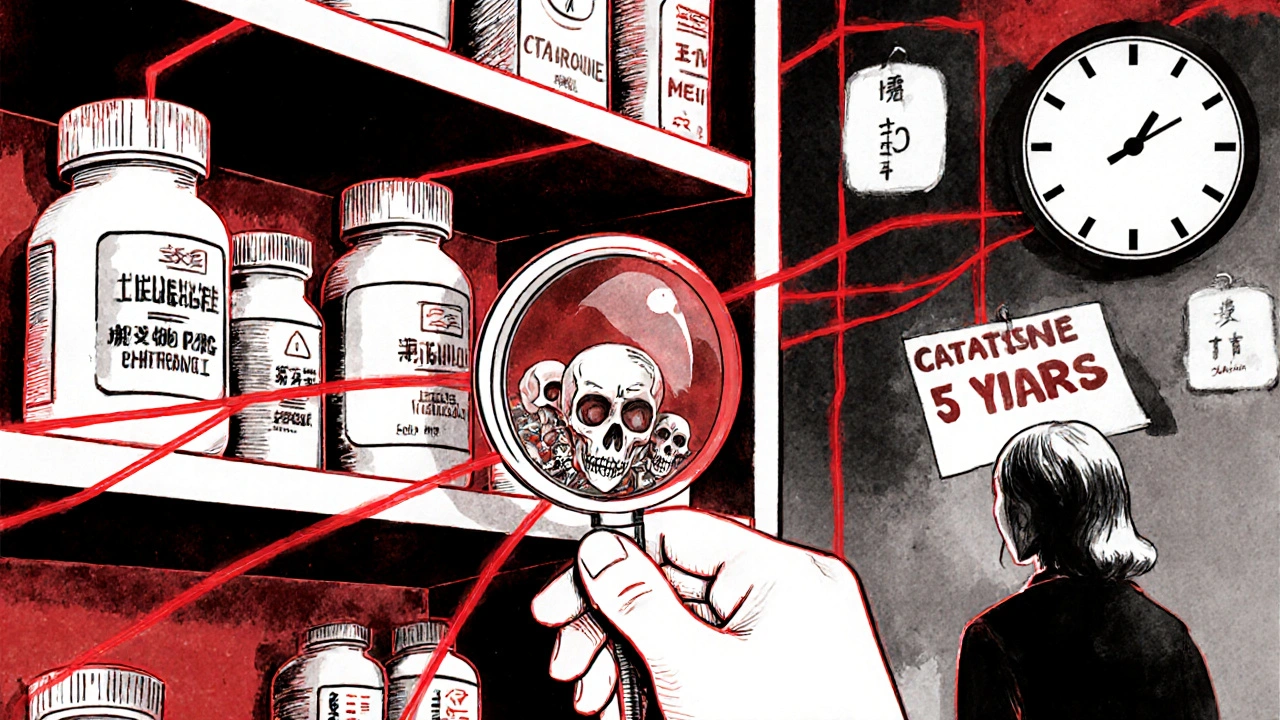
The truth about chloroquine and COVID-19
During the pandemic, chloroquine was pushed as a miracle cure. It wasn’t. Multiple large studies-including one by the WHO in 2020 and another by the U.S. National Institutes of Health in 2021-found no benefit. Worse, it increased the risk of death and heart complications in hospitalized patients.
By 2022, every major health agency in the world had withdrawn emergency use authorizations. Today, no reputable medical body recommends chloroquine for COVID-19. Yet, misinformation still circulates online. If someone tells you it’s a safe, proven treatment for viral infections, they’re wrong.
When chloroquine phosphate might still be necessary
There are still valid uses. In parts of the world where malaria is common and resistance to other drugs exists, chloroquine remains a tool. For some patients with lupus who don’t respond to other treatments, it’s still prescribed-under strict monitoring.
The key is control: the right dose, the right patient, and constant monitoring. It’s not a drug you pick up at the pharmacy because you read about it online. It’s a treatment that belongs in a doctor’s office with lab tests, eye scans, and follow-ups built in.
Final thoughts: This isn’t a risk worth taking
Chloroquine phosphate has a long history of helping people. But the risks are real, measurable, and often permanent. The side effects aren’t just unpleasant-they can blind you or stop your heart.
If you’re considering it, ask for alternatives. If you’re already on it, get checked. Don’t wait for symptoms. The damage often happens before you feel it.
This isn’t about fear. It’s about awareness. Your body doesn’t lie. But it doesn’t always warn you in time.
Can chloroquine phosphate cause permanent blindness?
Yes. Chloroquine phosphate can cause irreversible retinal damage known as chloroquine retinopathy. This damage affects the macula-the part of the eye responsible for sharp central vision. Once vision loss occurs, it cannot be reversed. Regular eye exams every six months can detect early changes, but many patients aren’t informed of this risk until it’s too late.
Is chloroquine phosphate still used for malaria today?
Yes, but only in specific regions where malaria parasites remain sensitive to it. In most parts of the world, including Southeast Asia and Africa, malaria strains have developed resistance to chloroquine. In these areas, other antimalarials like artemisinin-based combinations are preferred. Chloroquine is no longer a first-line treatment in most countries.
How does chloroquine compare to hydroxychloroquine?
Hydroxychloroquine is a slightly modified version of chloroquine with a lower risk of retinal toxicity. It’s now the preferred drug for autoimmune conditions like lupus and rheumatoid arthritis. For malaria, both have similar effectiveness, but hydroxychloroquine is generally safer for long-term use. However, it still carries the same risks-just at a slightly lower rate.
Can you take chloroquine phosphate with alcohol?
It’s not recommended. Alcohol increases the risk of liver damage and can worsen side effects like dizziness and nausea. Both substances are processed by the liver, and combining them can overload the organ. There’s also evidence that alcohol may increase the risk of heart rhythm problems when taken with chloroquine.
What should I do if I miss a dose of chloroquine phosphate?
If you miss a dose, take it as soon as you remember-unless it’s almost time for your next dose. Never double up to make up for a missed dose. Taking too much too soon can lead to overdose, which can cause seizures, heart failure, or death. Always follow your doctor’s instructions and use a pill organizer if you’re prone to forgetting.
Are there natural alternatives to chloroquine phosphate?
There are no proven natural alternatives that work the same way for malaria or autoimmune diseases. Some herbs like Artemisia annua (sweet wormwood) contain artemisinin, which is used in modern antimalarials-but it’s not the same as taking chloroquine. Self-treating with supplements can be dangerous. Always consult a doctor before replacing prescribed medication.

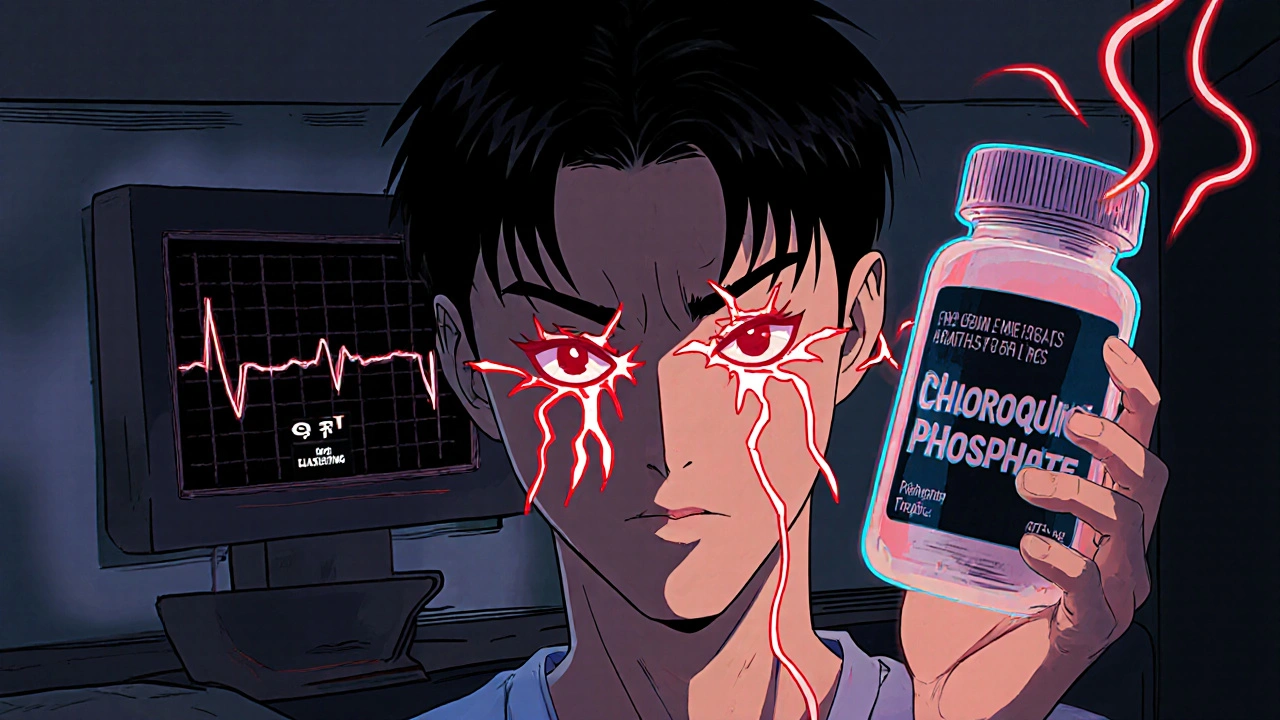
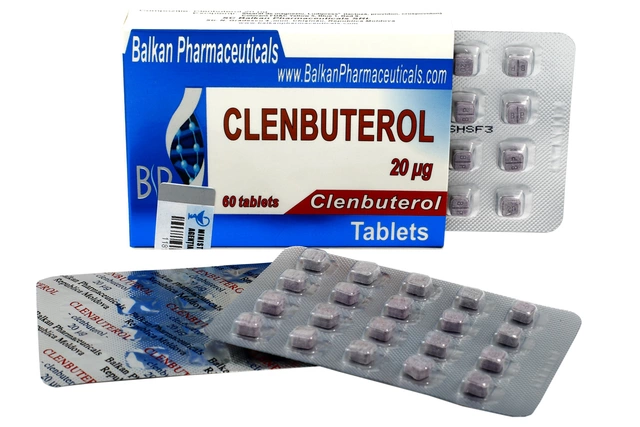


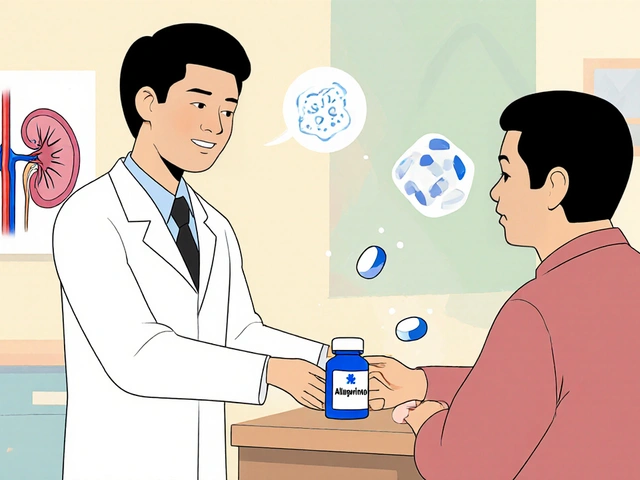

Nishigandha Kanurkar
November 4, 2025 AT 02:41They’re hiding the truth AGAIN!! Chloroquine was banned because it WORKS too well-and the pharma giants lost billions! You think they care about your eyes or your heart? NO. They care about your NEXT PRESCRIPTION. The FDA? A puppet. The WHO? A corporate shell. They don’t want you cured-they want you hooked on expensive drugs that don’t fix anything. I’ve seen the documents. The data was MANIPULATED. They made it look dangerous so you’d forget about the REAL cure. 🚨💊👁️
Lori Johnson
November 4, 2025 AT 11:40Okay but can we talk about how no one ever tells you about the eye exams?? I was on this for lupus for 3 years and my doctor never mentioned retinopathy until I started seeing floaters. By then it was too late. I had to get a $2,000 OCT scan just to confirm the damage. Now I’m legally blind in one eye and they’re like ‘oops, sorry, here’s a coupon for a magnifying glass.’ This isn’t medical care-it’s negligence with a stethoscope. 😔
Tatiana Mathis
November 5, 2025 AT 06:37It’s important to recognize that chloroquine phosphate has a well-documented risk profile, and while its use has declined due to safer alternatives, it remains clinically relevant in specific contexts. The key is informed consent and structured monitoring: baseline and biannual ophthalmologic evaluations, cardiac screening, and thorough medication reconciliation. The absence of these protocols is not a flaw in the drug-it’s a failure of the system. Patients deserve transparency, not fearmongering or silence. The fact that this post exists is a step toward accountability. Thank you for the detailed breakdown.
Michelle Lyons
November 6, 2025 AT 17:36Did you know the CDC has a secret database of all the people who went blind from chloroquine? They call it Project Blackout. They’re using the data to train AI to predict who’ll be the next victim. That’s why they push hydroxychloroquine now-it’s just chloroquine with a different name and a higher price tag. The eye scans? They’re not to protect you. They’re to catalog you. 🕵️♀️👁️
Cornelle Camberos
November 8, 2025 AT 05:49It is an incontrovertible fact that the administration of chloroquine phosphate without rigorous cardiac and ophthalmological surveillance constitutes a gross deviation from the standard of care. The assertion that this agent is inherently dangerous is misleading; rather, its danger lies in its misuse. The pharmaceutical industry’s retreat from its promotion is not indicative of its toxicity, but rather of its profitability. One must exercise extreme caution, and one must demand documentation. The patient is not a statistic. The patient is a human being who deserves competence.
joe balak
November 9, 2025 AT 22:59So if you take it for malaria in a country with no doctors, you’re basically rolling the dice? No tests no nothing? Just hope you don’t go blind or stop your heart? That’s wild.
Iván Maceda
November 11, 2025 AT 15:55Our country doesn’t need foreign drugs poisoning our people. Chloroquine was made in America. They banned it because they wanted us dependent on imports. The real enemy isn’t the drug-it’s the globalist agenda that replaced it with expensive generics from India and China. 🇺🇸💔👁️
Vrinda Bali
November 13, 2025 AT 11:07My cousin took this for rheumatoid arthritis. She woke up one morning and could not see her own wedding ring. She cried for three days. The doctor said, "It’s rare." Rare? How many women have lost their sight because someone thought "it’s probably fine"? This drug is a silent assassin. The government knows. The hospitals know. But they let it happen because they’re too busy selling the next pill. 🕯️👁️
John Rendek
November 14, 2025 AT 12:08If you’re on this med, get an ECG and an eye exam. Now. Not next month. Now. And tell your pharmacist every supplement you take. One conversation could save your vision or your life. You’re not being paranoid-you’re being smart.
Sonia Festa
November 14, 2025 AT 17:34Chloroquine? More like "Chloro-whoa-did-I-just-blind-myself". I read this whole thing and my jaw hit the floor. Like, I knew it was sketchy, but I didn’t know it was "sneakily steal your vision while you’re scrolling TikTok" sketchy. My aunt took this for years and now she can’t read the damn microwave. 🤯👁️
Sara Allen
November 16, 2025 AT 13:40so like... if you take this and go blind its your fault? why would you even take it if you dont know all the risks? like duh its a strong drug. why are people so surprised? also why is everyone acting like its the first time someone got hurt by a med? i take tylenol and i dont even read the label. i just hope it works. lol
Amina Kmiha
November 17, 2025 AT 22:31They didn’t ban it because it was dangerous. They banned it because it was TOO cheap. One pill costs $0.10. A month’s supply? $3. The pharmaceutical industry makes billions off drugs that cost pennies to make. Chloroquine was a threat to their entire business model. The blindness? The heart damage? That’s just collateral damage in the war for profit. 🕵️♀️💸👁️
Ryan Tanner
November 18, 2025 AT 14:36Big thanks for laying this out so clearly. If you're on this med, please don't panic-but DO act. Get those eye and heart checks. Talk to your pharmacist. You've got this. And if you're worried? Ask about hydroxychloroquine. It's not perfect, but it's safer. You're not alone. 💪❤️